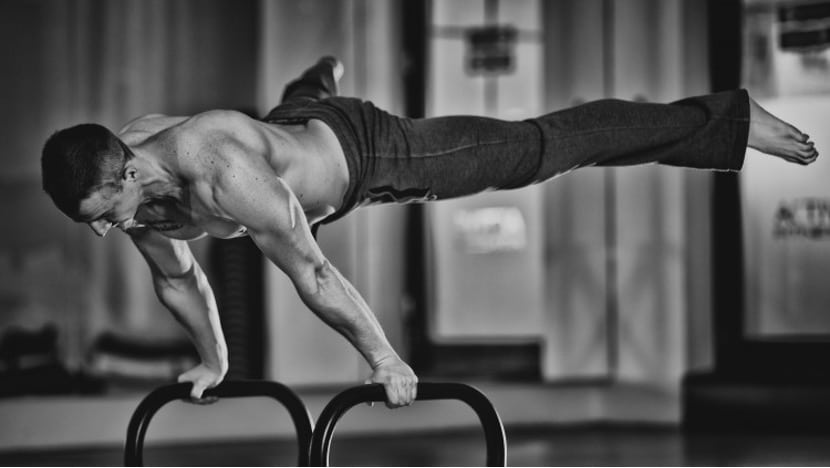7 de April de 2023
The Different Types of Muscle Strength
Muscle strength is a physical capacity that has proven to have great health and performance benefits. Several years ago, cardiovascular training was the goal of every athlete and every person when talking about physical exercise. In fact, “fads” such as jogging, running or spinning emerged. All of them aimed at improving cardiopulmonary capacity. The increase in the practice of these sports modalities arose because it was demonstrated that a good cardiopulmonary capacity was related to greater longevity and a better state of health (1). However, in recent years the capacity that has obtained the first position in terms of health has been muscular strength (2). And not only that, but in endurance sports or team sports such as soccer/ football, basketball, volleyball or handball, muscle strength training has taken a step forward and has become a key part of training. So much so that, nowadays, all professional sports teams have a trainer specialized in muscular strength.
If we talk about the relationship between strength training and mortality or life expectancy, a recent narrative review analyzed the effect of this type of training on mortality in adult populations (3). To do so, they reviewed several epidemiological and intervention studies. In general, the results suggest that muscular strength, measured through various indicators such as grip strength or weight lifting capacity, is positively associated with lower mortality. That is, people with greater muscle strength have a lower risk of death from various causes, including cardiovascular disease, cancer and other pathologies. The authors explain that this relationship is due to several factors, such as improved metabolic health and decreased systemic inflammation. They also discuss the importance of including muscle strength training in prevention and treatment programs for various chronic diseases.

On the other hand, as we have already mentioned, muscular strength is increasingly applied to all types of sports. We must not forget that, in the first instance, technique is the first variable that we must improve and, once controlled, muscular strength is a great determinant of sports performance. A recent article published by Suchomel T. et al. analyzed the effect of strength enhancement on athletic performance in different sports (i.e., soccer, basketball, track and field or swimming) (4). Their results show that the greater the muscular strength, the better the athletic performance. And not only that, it is also advocated that muscle strength should be worked at all ages and at all levels because it is a phenomenal treatment to reduce the risk of injury in all types of populations.
It should be noted that muscle strength training must be carefully prepared to optimize results. In this sense, the periodization of strength training has been studied for years. One of the first authors to talk about the periodization of strength training was Tudor Bompa, a very well-known person within the Sports Sciences. According to Bompa, periodization is a training planning method that involves the manipulation of variables such as intensity, volume and frequency, among others, in order to maximize the athlete’s performance and prevent stagnation or overtraining. From the Vitruve blog, we strongly recommend that if you want to learn about the periodization of strength, a “must” that should not miss in your library is the book “Periodization of Strength Training for Sports”. In it, the authors deal specifically with each type of preparation focused on muscular strength for different sports and disciplines. They talk about the principles of training that are still used in any planning today, such as individualization or specificity in each of the stages of preparation.
Taking into account the importance of muscle strength in the different variables we have mentioned, in today’s article we are going to analyze the types of strength that exist and what they depend on. Before we begin, I would like to point out that improving strength in general will have positive effects on the body, however, if we want to specifically prepare strength training for a particular sport, we must be more precise.
What types of strength are there?
As we have already mentioned, there are different variants of the manifestation of strength. If we had in front of us a 100-meter sprinter, a weightlifting athlete and a marathon athlete, which of them would be stronger? We cannot give a fixed answer. In other words, depending on what type of force we are evaluating, one will be stronger than the other. And the fact is that, depending on the sport modality, the manifestation of the strength that we are going to train is different. In order to better understand the differences between them, we will explain them one by one briefly.
Maximum strength
Maximum strength is the manifestation of strength that relates to the greatest load that a person is able to move. If we are used to training in the gym, we know that one of the ways that determines maximal strength is the maximum repetition. When preparing a training plan to improve RM, a test is performed before and a test after the complete training and the improvement of maximal strength is evaluated.

In the past, one of the ways to perform an RM test was by a field test in which the weight was gradually increased until the maximum weight a person was capable of lifting was reached. Today, thanks to technologies such as Vitruve, a very short and simple field test can determine the 1RM without exhausting the central nervous system thanks to the velocity of execution. In fact, researchers at the University of Granada have developed systems that allow to know the 1 RM by performing only 3 or 4 series (5). This type of strength depends to a great extent on the central nervous system and generates adaptations that allow a much more efficient recruitment of motor units and muscle fibers.
Endurance/ Strength resistance
Endurance can be defined as the body’s ability to maintain a constant force over a long period of time. For example, in triathlon or cycling, athletes are constantly applying force to overcome resistance (i.e., the resistance of the bike, the water, or simply moving during the race). This type of strength should be trained in this type of sport because it has been shown to improve sports performance. In a recent article published by Prieto-González et al., concluded that concurrent work, in other words, combined strength and endurance work, improved parameters related to performance in recreational athletes (6).

Explosive strength
Explosive strength is the greatest manifestation of strength in a very short period of time. This capacity is perfectly appreciated in sports such as weightlifting or long jump. Athletes must exert as much force as possible in a very short period of time in order to lift the weight they have or to jump as far as possible. This also applies to any type of throwing or jumping (i.e., shot put, javelin, hammer or discus throw and high jump or triple jump). Power is defined as the force imparted by speed. Just as at the beginning of this blog we have highlighted the important role that strength plays in health, nowadays there is a small shift towards power. That is, it seems that the determinant of good health is not only the muscular strength you can apply but the speed at which you do it.
The study conducted by Reid K. et al. in 2012 determined the important role of explosive strength in the older adult (7). In their study they determined that muscle power was a greater predictor of functional capacity than muscle strength. In addition, a systematic review with meta-analysis conducted in 2015 analyzed the relationship between explosive strength and balance in all types of ages and concluded that the greater the explosive strength, the greater the balance and the lower the risk of falls or injury (8). That is why explosive strength training should be a must whether you want to improve sports performance or better health.

Other types of strength
We could say that the main manifestations of strength are those previously mentioned. However, there are other types of strength such as the maximum isometric force that measures the degree of force that a person has when trying to move an insurmountable load. Or there is also the maximum eccentric strength that would be the force that a person is able to perform when performing the eccentric phase of a movement. For example, if we are performing a squat, we are able to support more kilos when we are breaking the fall of the bar than if we want to lift that bar.
A very simple example to understand this concept is that if we have an RM of 100 kg, we are able to lift those kilos doing a squat. However, if we want to determine how many kgs we are able to break we will use 120-130 kg, for example. It is good that you know the types of strength that exist, although as we have said, we will focus much more on the three main manifestations expressed in this post.
Conclusion
In conclusion, this week’s article presents the importance of muscular strength training for health and sports performance, indicating that muscular strength has become a key element in the training of endurance or collective sports. The studies presented suggest that muscle strength is positively associated with lower mortality due to improved metabolic health and decreased systemic inflammation. The importance of including muscle strength training in prevention and treatment programs for various chronic diseases is also discussed. In addition, the article discusses the types of strength that exist highlighting that periodization of strength training is essential to maximize the athlete’s performance and prevent plateauing or overtraining. We highlight again the main types of strength that exist:
- Maximum strength.
- Endurance/Strength resistance.
- Explosive strength.
Finally, the role of strength is becoming increasingly important for both performance and health. Remember that training all manifestations of strength will help your body function as a perfect machine or at least be on the way to doing so.
Unai Adrián Perez de Arrilucea Le Floc’h
References
1.Pietri P, Stefanadis C. Cardiovascular aging and longevity: JACC state-of-the-art review. Journal of the American College of Cardiology. 2021;77(2):189-204.
2.Wang DX, Yao J, Zirek Y, Reijnierse EM, Maier AB. Muscle mass, strength, and physical performance predicting activities of daily living: a meta‐analysis. Journal of cachexia, sarcopenia and muscle. 2020;11(1):3-25.
3.Volaklis KA, Halle M, Meisinger C. Muscular strength as a strong predictor of mortality: A narrative review. Eur J Intern Med. 2015;26(5):303-10.
4.Suchomel TJ, Nimphius S, Stone MH. The Importance of Muscular Strength in Athletic Performance. Sports medicine (Auckland, NZ). 2016;46(10):1419-49.
5.Bazuelo-Ruiz B, Padial P, García-Ramos A, Morales-Artacho AJ, Miranda MT, Feriche B. Predicting maximal dynamic strength from the load-velocity relationship in squat exercise. The Journal of Strength & Conditioning Research. 2015;29(7):1999-2005.
6.Prieto-González P, Sedlacek J. Effects of Running-Specific Strength Training, Endurance Training, and Concurrent Training on Recreational Endurance Athletes’ Performance and Selected Anthropometric Parameters. International Journal of Environmental Research and Public Health. 2022;19(17):10773.
7.Reid KF, Fielding RA. Skeletal muscle power: a critical determinant of physical functioning in older adults. Exercise and sport sciences reviews. 2012;40(1):4.
8.Muehlbauer T, Gollhofer A, Granacher U. Associations between measures of balance and lower-extremity muscle strength/power in healthy individuals across the lifespan: a systematic review and meta-analysis. Sports medicine. 2015;45:1671-92.

